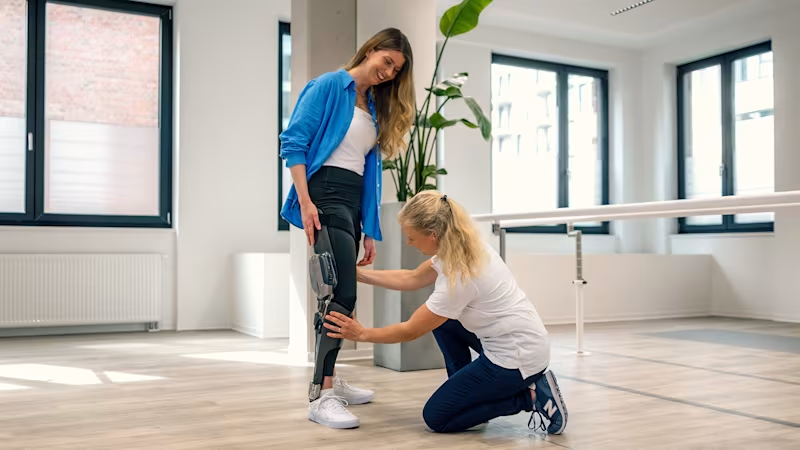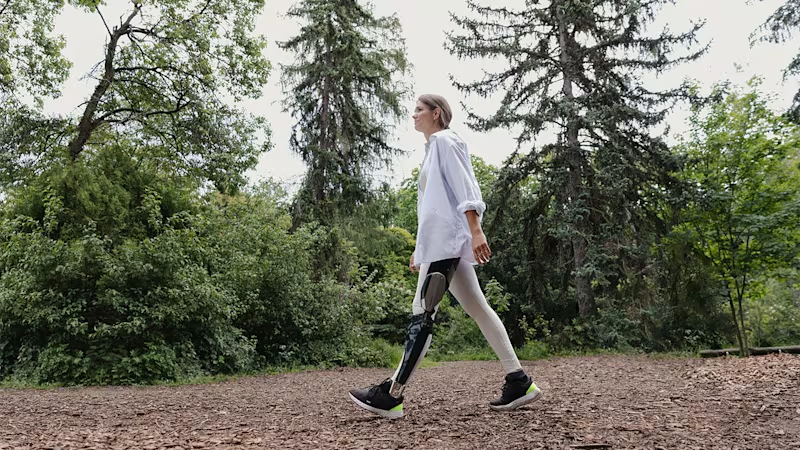

C-Brace is changing lives one step at a time.
Live the life you deserve with the C-Brace.
What is the C-Brace and who can benefit from it?
The C-Brace is a microprocessor-controlled leg orthosis that responds to everyday movements and situations in real-time. This helps ensure the safety, stability, and confidence in user’s everyday lives.
The C-Brace allows people with paralysis in their legs to walk with variable speed.
C-Brace users can enjoy activities with their families and friends, while experiencing life in a completely new way. People with neurological indications of the lower limbs can benefit from the C-Brace. The leading indications are incomplete paraplegia (lesion between L1 and L5) with very minor to no spasticity, as well as post-polio syndrome, a condition that can follow poliomyelitis.

How does the C-Brace work?
The C-Brace consists of individually fabricated thigh, calf, and foot components. An ankle joint or individual spring element connects the foot and calf components. The sensor component continuously measures the flexion of the knee joint and its angular acceleration. This lets the C-Brace detect the user’s current walking phase, so it can regulate the hydraulic resistances as well as control the flexion and extension of the knee joint.
Increasing your mobility after a spinal cord injury
Whether your injury is complete or incomplete, improving your freedom of movement can often be a complex, lifelong process.
Your recovery and rehabilitation may look different depending on your injury and its impact, but it should always involve a multidisciplinary care team — including experts in physical therapy, orthotics, and mobility. These specialists may approach your treatment in a variety of ways, depending on the location of your injury, your exact symptoms, and your residual muscle control.
That care typically has three key phases:
Acute treatment: Immediately after a spinal cord injury, the top priority is to protect your vital functions, stabilize your spine, and prevent more severe complications.
Rehabilitation: Once your spine has been stabilized, the focus shifts to holistic treatment for the physical, psychological, social, and work-related impact of your injury. During this phase, you may start using a combination of different mobility aids to help you rebuild their ability to move.
Long-term care: People with a spinal cord injury typically require many forms of ongoing support for their mobility, independence, and overall quality of life. Over time, your care team may have you continue trying different combinations of mobility aids, from orthoses, to wheelchairs, to a neuromodulation garment for spasticity symptoms.
Managing symptoms with NeuroMobility solutions
No matter what kind of spinal cord injury you’ve experienced, improving your mobility will be a big part of your long-term care. Freedom of movement is critical to everyday life, from personal care, to eating and working, navigating your world, and beyond.
Several mobility aids can help, from simple braces to wheelchairs, and advanced neuromodulation devices designed to reduce spasticity and related pain. Sign up for a complimentary consultation today!

Live the life you deserve with C-Brace. Request a free, no-obligation trial now.
- Reach out to request a free trial. There's no commitment needed to try out C-Brace!
- We'll get in touch to schedule a personal consultation with an expert orthotist.
- During your trial, your orthotist will determine if C-Brace meets your needs.